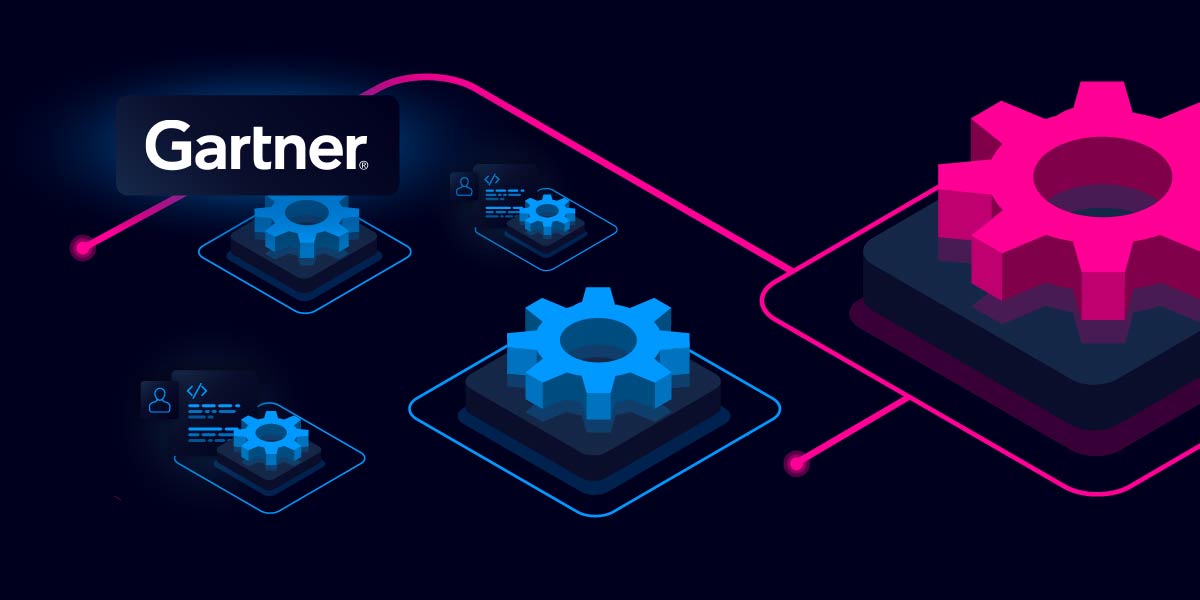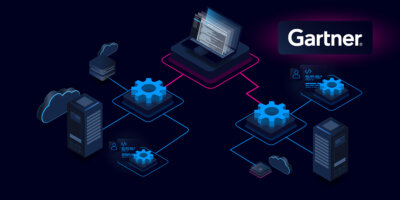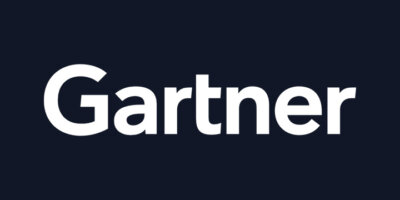Share this

Table of Contents
If your automation efforts feel like they’ve hit a wall, you’re not alone — and you’re not doing anything wrong. In fact, according to the 2025 Gartner® Market Guide for Network Automation Platforms, most enterprises are in the same place: they’ve made progress, but they’re not scaling.
Why? Because their automations are isolated, fragmented, and disconnected across tools, teams, and domains. Or as Gartner puts it, most organizations are trapped in “automation islands.”
And that’s the real problem — not ambition, not budget, not even skills (though that doesn’t help). It’s the silos.
Tool Sprawl Is Killing Your Momentum
Let’s be real: nearly every enterprise has automation running somewhere — maybe it’s a few Python scripts, maybe an Ansible playbook, maybe something wrapped in Terraform/OpenTofu, or a vendor specific controller or point solution.
But the reality is, most teams are using 3+ tools to automate, and those tools don’t talk to each other.
You’ve got your provisioning scripts, your compliance checks, your change validations… all living in different tools, managed by different people, built in different ways. And the glue? Usually manual handoffs, tribal knowledge, or “that one person who knows how it works.”
This is exactly what Gartner calls out in its 2025 report:
![]()
The usage of multiple tools creates fragmentation, or silos/islands of automation, that makes it difficult to automate an end-to-end network service.
Without a way to connect those tools and coordinate workflows across domains — automation can’t scale. It’s not a tooling issue. It’s an orchestration issue.
Symptoms You’re Stuck in Automation Silos
Sound familiar?
- You’ve automated tasks but not processes.
- Your scripts can’t be reused across teams.
- You still rely on manual approvals or ticketing to move things forward.
- You’re running automation in a few places but can’t prove broader ROI.
- “Scaling automation” = paying to train people to write more scripts.
This is where most enterprises stall. Not because they’re behind — but because they’ve reached the limit of what fragmented automation can do on its own.
What You Need Is a Platform That Orchestrates
To break out of automation silos, you don’t need to start over. You need to connect what you already have into something repeatable, trackable, and scalable.
That’s where orchestration comes in — and where Gartner recommends leaders shift their focus:
Task automation ➡️ End-to-end workflows
One-off scripts ➡️ Reusable services
Tool-by-tool efforts ➡️ Platform-driven scale
How Itential Helps You Scale Beyond Silos
The Itential Platform is purpose-built to solve this fragmentation. We’re not asking you to replace your tools — we help you make them work together. Here’s how:
⚙️ Unify Automation Execution
Normalize Python, Ansible, Terraform/OpenTofu, and even AI-driven MCP — all from a central, consistent execution framework.
🔁 Orchestrate End-to-End Workflows
Orchestrate across domains (network, cloud, ITSM, security) with low-code workflow design. Connect provisioning, change, incident, and compliance — not just configs.
🔌 Integrate with Everything You Already Use
From ServiceNow, CMDBs, telemetry, Git, cloud platforms, sources of truth — Itential connects them all so your automation flows with your operations.
🚀 Empower Your Teams for Scale
Our low-code environment enables network and infrastructure teams to design, test, and publish workflows without writing custom software.
Whether you’re trying to close tickets faster, standardize network changes, or simply get visibility across your automation landscape — Itential helps you move from scripts to services.
Ready to Connect the Dots?
If your automation feels stuck — it’s not failing. It’s just fragmented.
The good news? That’s solvable.
Let us show you how orchestration changes everything.
👉 Take a self-guided tour of the Itential Platform
👉 Download the 2025 Gartner Market Guide



